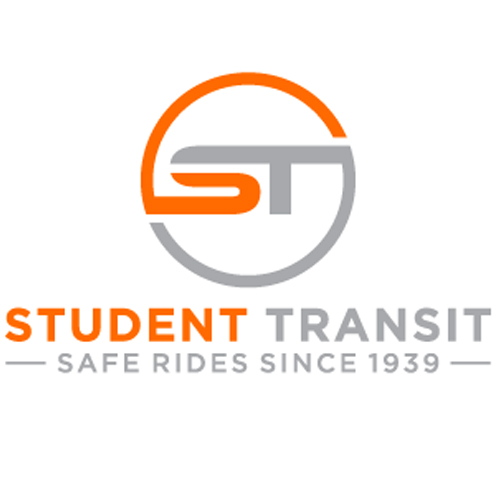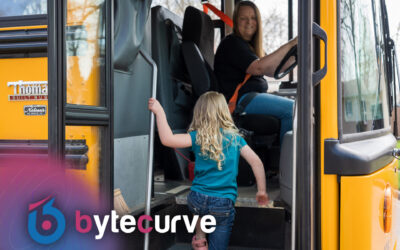A Deeper Dive Into Educational Inequity Due to Lack of Bus Services.
School buses are a part of more than 25 million student’s lives.
Every morning and afternoon, students can count on school buses to take them to and from school. Not only do school buses provide transportation for the student, but they also offer parents a sense of relief knowing that their child will get to school in safe hands. But what if I told you that not every student is afforded this luxury?
While offering an array of benefits to its riders, there are still a large number of schools that do not offer a school bus to their students. Students with this issue, who are usually minorities looking to attend higher-achieving schools, are left with the next best option, leaving them out of educational opportunities that are afforded to their peers who attend better schools. On the other hand, the students who do take the bus may have lengthy commutes, increasing the likelihood of that child being absent from school.
While school buses are largely beneficial to their riders, there is still a disparity among students, specifically black and Hispanic students. This creates a demographic concern over educational access and equity.
According to a Syracuse University study, absenteeism for black and Hispanic bus riders is three to four times larger than it is for Asian bus riders and 20 to 25 times larger than white bus riders. But why?
A large part of the reason why some students have a longer commute than others is because their parents want to send their child to a better school, which is usually farther away from their home.
For students living in lower-income neighborhoods, their parents often look outside of their attendance zones to find charter schools that will give their child a better education than those in their neighborhoods.
The time it takes to commute to and from school can overshadow the advantages of sending a student to a charter school, despite the fact that this is in their best interests. A longer commute is likely to decrease student attendance and test scores.
Researchers at Temple University worked with researchers from Syracuse to track data from 3rd-6th graders in NYC whose parents had the option to send their child to a public school within their attendance zone or to look at ones beyond their neighborhood.
The researchers found that the absenteeism rate was 12% for students with commitments lasting longer than an hour. This may not seem like much, but 12% equates to missing an entire extra day of school compared to students with shorter commutes.
Trusted by the Finest Names in School Bus Transportation
Chronically Absent
Absenteeism creates a downward spiral for students; missing two days of school per month can add up to a child being considered chronically absent. There are several reasons why a child might be considered absent – sickness, mental health, and school-related anxiety are just a few- but long school bus commute times have been on the rise as a main contributor.
No matter the reason, chronic absenteeism is detrimental to a child’s academic performance. Children who are chronically absent in younger grades are more likely to be a reading level behind their peers, and children who are chronically absent in middle and high school are more likely to fail out of school.
Chronic absenteeism is also associated with higher substance use in teens and poor health in their adult lives. With all of this taken into account, it is easy to see why a long school bus commute has become an increasing concern.
While having a long bus commute is a pressing issue for students, there are still a large number of students, mostly black and Hispanic, who do not even have access to a bus in the first place.
Another study from researchers at Temple University dove deeper into this issue, noting that there is a lack of school bus services for minority students who live far from higher-achieving schools outside of their neighborhoods.
On average, black students live at least half a mile farther from school than white students, yet they are only slightly more likely to take the bus.
One would think that considering black students live substantially farther than their white peers, there would be a greater difference in the likelihood of taking the bus. Even so, once the differences in bus eligibility based on distance from the school were accounted for, researchers found that black and Hispanic students living a similar distance from school to white students were less likely to take the school bus compared to their white peers.
This could be a result of school-related anxieties that minority students may face due to the lack of representation in higher-achieving schools or the rigidity of the bus routes that these schools offer.
So how can these issues be solved?
For starters, making school bus services mandatory across all schools would increase educational equity. Currently, principals have the final say in whether or not their school will not offer bus services. To avoid this subjectivity, the Office of Pupil Transportation can mandate bus services in every school.
While this may seem like a costly endeavor, there are ways to mitigate the financial stress. Boston Public Schools, for example, worked with researchers from MIT’s Operations Research Center to create a more efficient bus route. The new algorithm, which focused on reusing buses between the hundreds of public schools within the district, saved Boston Schools $5 million and 1 million miles driven in just one year.
To help students with longer commute times, school buses can install Wi-Fi connectivity to keep students engaged and busy. Whether it be with homework or an app installed on their device, the student’s focus will be on what is in front of them rather than on their commute time.
When it comes to school buses, the hard truth is that not every student has access to one. This creates limited opportunities for educational equity and success, more often than not, affecting minority students worse than their white peers. Parents of black and Hispanic students seek out higher-achieving schools for their children to set them up on a greater path to success.
While this is a great thing, many of these students face setbacks when their commute is lengthy and access to school buses is limited; they are left with higher absenteeism and lower educational success.
Changing the way the school bus system works is a big challenge, but nowhere near impossible. School buses will one day be the gateway to equal educational opportunities for all students.
Bytecurve as a technology tool to improve student transportation
Bytecurve offers various benefits for school bus managers, focusing on three key areas: efficiency, safety, and cost reduction. By merging GPS fleet tracking with routing data and integrating payroll functionality, Bytecurve can help student transportation managers improve operations and satisfy their customers.
Here’s a breakdown of some specific benefits:
Efficiency:
- Improved on-time performance: Bytecurve integrates data from route planning systems and on-board technologies like GPS to optimize routes and schedules, ensuring buses arrive and depart on time.
- Automated dispatch: Daily dispatch is automatically generated and managed, freeing up time for managers to focus on other tasks.
- Real-time tracking and monitoring: Managers can track bus locations and receive real-time updates on clock-in, allowing for proactive decision-making.
- Reduced paperwork: Bytecurve streamlines reporting and communication, reducing the need for paper-based forms and processes. Say goodbye to management by dense spreadsheets and communicating with drivers via whiteboard. And hello to flexible and responsive dispatching and payroll capabilities.
Safety:
- Improved driver communication: The DriveOn app facilitates communication between dispatchers and drivers, ensuring timely updates and addressing emergencies efficiently. Drivers can also check their schedules and punch in/out via the app.
- Data-driven safety insights: By analyzing data on incidents, managers can identify trends and implement targeted safety initiatives.
Cost reduction:
- Optimized fuel usage: Efficient route planning and real-time traffic updates help reduce fuel consumption and vehicle wear and tear.
- Reduced overtime costs: Improved scheduling and on-time performance minimize the need for overtime hours for drivers.
- Data-driven decision-making: By analyzing data on various aspects of bus operations, managers can identify areas for cost savings and optimize resource allocation.
Additional benefits:
- Easy-to-use interface: Bytecurve offers a user-friendly interface that makes it easy for managers to learn and use the platform. The system is backed by robust customer success managers who are always available to ensure ROI on the platform.
- Scalability: The platform can scale to meet the needs of small and large school districts alike. Private school bus contractors find the payroll feature an important aspect of the accounting and cost-saving measures.
- Integration with existing systems: Bytecurve integrates seamlessly with various existing school bus management systems, including most GPS fleet tracking and routing systems.
- Training resources: Bytecurve offers comprehensive training resources to help managers get the most out of the platform.
Overall, Bytecurve provides school bus managers with a comprehensive platform to optimize efficiency, enhance safety, and reduce costs, ultimately creating a better experience for students, parents, and staff.









